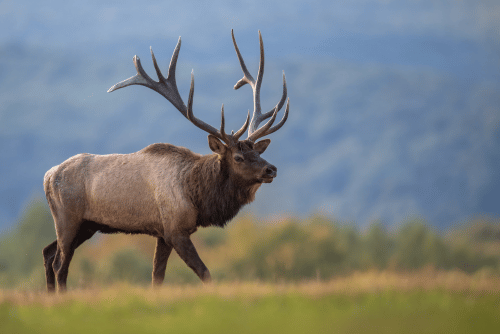
Blog
- Leave and Absence
Home
Resources
Health & Safety

Frank O'Rourke, Vice President - Health & Safety
(Last updated )

Frank O'Rourke, Vice President - Health & Safety
(Last updated )
With outdoor work increasing during the warmer months, so does the need for protecting outdoor workers from possible hazards, some of which include wild animals. Equipping your outdoor workers with the knowledge and tools necessary for any possible wild animal encounters is crucial for preventing injury or even death.
It is important to note that most wild animals will only attack if they feel threatened or agitated. Protecting your outdoor workers from animal attacks also includes smaller wild animals such as skunks and raccoons. Whether big or small, it’s important that you and your employees know how to avoid these attacks and what to do if confronted by a wild animal.
Different animals react differently to perceived threats, but there are some basic things you can do to avoid attracting wild animals to your worksite.
General safety procedures include:
Most wild animals will have tell-tale signs of feeling threatened or preparing for an attack. It is always good to understand these signs to further avoid potential attacks. Some of these signs from more popular wild animals include the following:
Skunks – When angered, skunks will hiss or growl, rapidly stomp their feet, or walk a short distance on their front feet with their tails high. Before spraying, they will also hump their backs and turn in a U-shaped position, so their face and tail is directed at their enemy.
Raccoons – Their general reaction at the sight of humans is to stop and observe, as they are usually afraid of humans. However, if provoked, they will attack.
Elks – If a female elk feels threatened, she will stare directly at her enemy with flattened ears and raised hump hair. She may also curl lips, grind teeth, charge, kick or circle her enemy before attacking.
Bulk elks – will lower their antlers towards their enemy, trash bushes, or charge if they feel threatened or agitated.
Bears – Bears aren’t naturally confrontational, but they are curious animals. You should never approach or feed a bear, as they become very forward and occasionally aggressive if their curiosity is rewarded with food.
An aggressive bear will huff or snap and pop their teeth together. It may also face you and lower its head in as it prepares to charge.
The general rule is that you should avoid wild animals as much as possible. However, should your outdoor workers encounter an unavoidable situation, here are a few steps they could take to prevent a possible attack:
Skunks
Raccoons
Elks
Bears
Encourage your workers to report any sightings of wild animals in or around the worksite so the relevant authorities can have them removed.
Whether you need help developing a safety policy for outdoor staff or guidance on workplace regulations, our health and safety experts have you covered. We have a team of consultants available 24/7 via telephone to answer all your queries. We also offer smart health & safety software to make your daily tasks quick and convenient. To learn more about how our services can benefit your business, call us today at 1 (833) 247-3652.
Home
Resources
Health & Safety
Find out what 6,500+ businesses across Canada have already discovered. Get round-the-clock HR and health & safety support with Peninsula.
